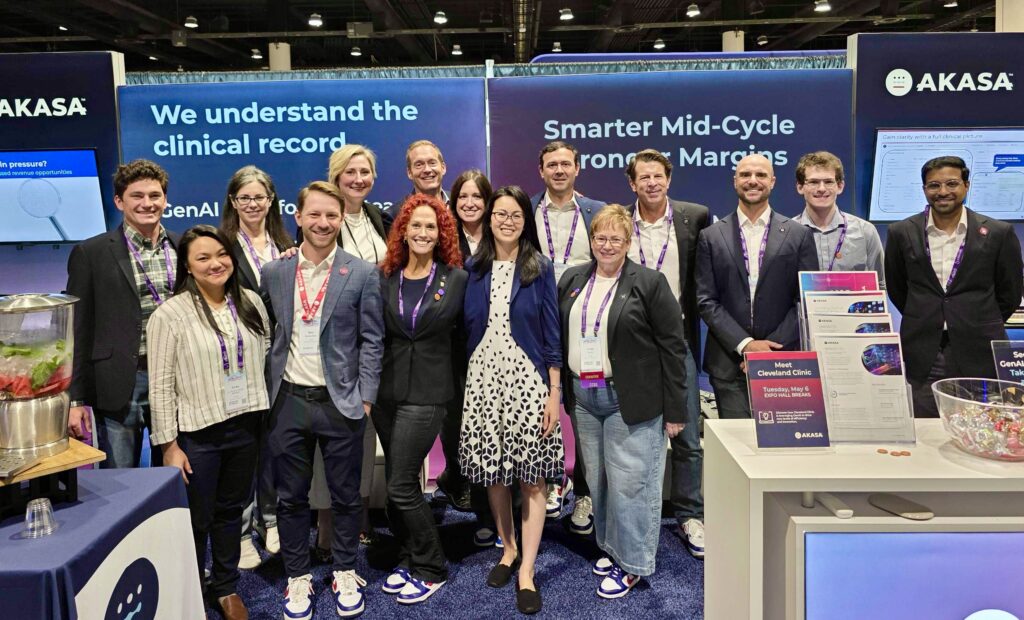The Gist
ACDIS 2025 highlighted a critical shift: CDI is now a strategic lever for quality and financial performance, not just documentation. Attendees explored how AI can support — not replace — human expertise, and why customization and adaptability are key. With rising payer denials and growing focus on quality metrics, leaders are rethinking their approach. Read the full recap for insights to future-proof your CDI strategy.
The 2025 ACDIS conference brought together clinical documentation integrity (CDI) professionals, health system leaders, and technology innovators to explore how CDI is evolving in the face of new regulatory and payer demands, staffing challenges, and rapidly advancing artificial intelligence.
From generative AI (GenAI) breakthroughs to peer-led sessions on denial prevention and second-level reviews, this year’s event proved that mid-cycle excellence is as much about strategy as it is about technology.
It reaffirmed a shared truth across the industry: clinical validation, quality impact, and human expertise remain at the heart of CDI — even as AI continues to transform how we work.

Here are critical takeaways from the event:
Reinforcement Learning and Customization: AI That Adapts to You
A core theme throughout the conference was the role of artificial intelligence in supporting, not replacing, CDI professionals. While many vendors pitched an “AI-powered” solution, many attendees were still seeking clarity on the types of AI and how these tools actually work in real-world workflows.
AKASA’s reinforcement learning approach struck a chord.
“Attendees were excited to learn that our models are trained on their own data and get smarter with use,” said Amy Raymond, SVP of Revenue Cycle Operations and Deployments at AKASA. “That means better accuracy, more relevance, and less noise over time.”
As discussions about AI maturity progress, many health systems are expressing frustration with rigid legacy systems. Despite having legacy systems in place, they are also utilizing multiple technologies and supplemental staff (concurrent coders, second-level reviewers, and consulting or other staffing reinforcements) to support the growing demands on CDI.
A common refrain at ACDIS is that organizations are seeking tools that allow for timely customization and adaptability — tools that think and work the way CDI teams work. They want vendors that can rapidly respond to growing demand and be nimble and ready for change.
Want to learn more about why your CDI workflows need GenAI? Check out: Generative AI: A How-To Guide for HIM Leaders. It’s a detailed roadmap with expert advice for where this technology can best be implemented, how to train your team, success metrics, and much more.
The Rising Importance of Quality Metrics
Many session conversations — and attendee questions — revolved heavily around quality metrics like SOI/ROM, Vizient scores, Elixhauser comorbidities, and the O:E (observed-to-expected) mortality index.
The role CDI plays in supporting accurate documentation of comorbidities like malnutrition, CKD, cardiac arrhythmias, and others significantly affects outcomes. They are tracked very closely today, but CDI is still tasked with maintaining CMI (case mix index) and revenue integrity. Margins continue to be tight, and quality-related penalties can further erode those margins.
One session described building a dedicated “risk review team” to ensure expected outcomes are properly documented — a trend that underscores how CDI continues to evolve from documentation policing to strategic quality leadership.
“Hospital leaders are increasingly measured by outcomes, not just bottom lines,” said Linda Schatz, RN, BSN, CCDS, Director of CDI at AKASA. “We saw growing interest in solutions that support better quality capture and risk adjustment — not just reimbursement.”
Notably, several presentations revealed that the majority of CDI query opportunities were tied to quality-related conditions and documentation integrity, not financial gain. Tools that enable better quality capture and drive appropriate reimbursement are critical.
The Art and Science of Queries
Multiple sessions highlighted query best practices, especially in light of increasing payer denials, which now include denials related to diagnoses captured through the query process and how well the query followed established guidelines. Speakers emphasized the importance of:
- Adhering to ACDIS/AHIMA query practice brief guidelines
- Avoiding open-ended or “leading” queries
- Including all clinically appropriate options
Query compliance is no longer just about checking boxes; it’s about offering clinically defensible, clearly structured options.
Providers are innovating in response to payer demands and denials. One organization discussed how they are using AI to simulate how payers’ algorithms might interpret appeal letters, then refining those letters before submission. This tactic blends tech with clinical expertise to drive better outcomes.
CDI as a Strategic Lever
Beyond tools and techniques, ACDIS 2025 made one thing clear: the best CDI programs are shifting from task-based roles to outcome-oriented impact. Organizations are:
- Embedding analytics directly into EHRs
- Prioritizing second-level reviews for high-risk cases
- Tying CDI KPIs to outcomes (mortalities, readmissions, PSI prevention, and denial avoidance), rather than productivity and query rates
As one session noted, chasing the highest-paying DRG isn’t enough to meet an organization’s goal. It’s about the integrity of the medical record and ensuring that it accurately reflects the quality of care provided. It’s about clinical specificity, integrity, and aligning with broader quality goals.
AKASA Unveils CDI Optimizer: A New Era for the Mid-Cycle
ACDIS 2025 also marked the public debut of AKASA CDI Optimizer™, our latest generative AI assistant built to redefine clinical documentation.
Designed in partnership with CDI professionals, CDI Optimizer reviews 100% of inpatient encounters and surfaces high-impact, evidence-backed query opportunities. Its intelligent prioritization engine helps CDI teams focus where it matters most: cases that can move the needle for quality, compliance, and revenue integrity.
“CDI Optimizer is more than a new product — it’s a strategic leap forward for the mid-cycle,” said Malinka Walaliyadde, CEO and co-founder of AKASA. “We’re deepening our investment in this space because we know GenAI can do more than just automate. It can elevate.”
The response at ACDIS was electric. One CDI leader who saw the demo there said, “You guys listened. This is amazing.”

From visual dashboards of labs and vitals to real-time collaboration tools, attendees saw firsthand how AKASA is helping CDI and coding teams do more, together.
Read why we created CDI Optimizer.
Looking Ahead for CDI
ACDIS 2025 showed a vibrant and evolving community, with CDI professionals ready to embrace technology, but on their own terms. They want transparency, flexibility, and tools designed for them.
As AKASA continues to partner with leading health systems and academic medical centers on mid-cycle solutions, we’re committed to building solutions that empower critical thinking, support compliance, and elevate both financial and quality performance.
Want to learn how our AI adapts to your data and workflows? Let’s connect.
Missed us at ACDIS? Follow us on LinkedIn for more updates and insights.

Tiffany Smith is the senior director of content and communications at AKASA. A former magazine editor, she has more than 20 years of experience in content, across healthcare, higher education, and finance, among others.








